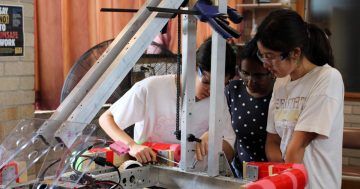Preparing a new business campaign, *David Livermore shared his cultural intelligence (CQ) and global leadership to show the way.
 I was recently working with a global marketing team that was preparing a campaign for a new product launch.
I was recently working with a global marketing team that was preparing a campaign for a new product launch.
It was a textbook example of the challenges that come with leading diverse teams.
Some team members assertively stated the need to make a quick decision defining what the campaign would be.
They preferred a bold, edgy, marketing strategy.
Others believed a more methodical approach was needed that allowed for time to get input from a variety of stakeholders. This wasn’t an isolated situation. The team repeatedly experiences misalignment which not only creates enormous frustration but also hinders their performance.
What usually happens in these situations is that the dominant values – usually those of the team leader and/or the organisation’s home culture – determine what approach will be used.
Many intercultural trainers address this by teaching teams about cultural values (e.g., here’s why some team members believe moving quickly is the best way).
Okay, great. But understanding differences does not by itself, translate into becoming a high performing team. Culturally intelligent leaders use a different approach. Rather than just building awareness or trying to change the cultural values of the people they lead, they develop team norms that are both inclusive and unifying.
Norms are not the same as values. Cultural values express what we like or desire to do. Norms are the shared rules for how we agree to work together.
We may have different preferences surrounding our desire for certainty (uncertainty avoidance).
But a team norm might be that every campaign will include a timeline that allows time for contingency planning without sacrificing a timely launch. Let’s look a bit deeper into how the cultural intelligence research provides practical direction for building inclusive teams, including a four-step process for creating culturally intelligent norms.
How to use the four CQ capabilities to develop inclusive teams
Leaders with high CQ Drive approach team differences with curiosity rather than avoidance. They’re motivated to look beyond team member’s behaviours to understand the values that are driving them. This yields important insights on what set of team norms are needed to create alignment.
Leaders with high CQ Knowledge have a better understanding of how the diversity of preferences on the team influences team members’ priorities and opinions about something like an effective campaign launch. It provides the understanding of how differences surrounding values like individualism, uncertainty avoidance, and time orientation affect the speed with which team members are ready to launch.
Leaders with high CQ Strategy are able to develop creative solutions that move beyond simply managing the diverse team values to creating norms that leverage the differences. CQ Strategy helps us to engage in perspective taking as a way to anticipate how each team member will react in a situation.
They develop creative solutions such as leaning on individualists to get things done efficiently and working with collectivists to lead the way in gathering input, buy-in, and consensus.
Leaders with high CQ Action are able to execute and support the norms they develop to ensure the team thrives amid its tasks and diversity. The behavioural flexibility that comes from CQ Action is important because it enables the leader to communicate, persuade, and reinforce the new norms on the team.
When team members become irritated by different work styles, the leader can point back to the non-negotiable norms while allowing flexibility in how the norms are applied.
How to create culturally intelligent team norms
In a new chapter on cultural intelligence and leadership judgment, Soon Ang, Thomas Rockstuhl and Georgios Christopoulos bring together the research on CQ and social norms to propose a process for how to create culturally intelligent team norms.
It begins by leaders detecting the existing cultural values that underlie organizational practices followed by a four-step process for creating new team norms:
- Identify current and desired norms
Conduct an inventory of existing norms, both implicit and explicit, and then clarify what norms will best allow the team to leverage the team’s diverse values to reach necessary outcomes. Every organization and team has norms but they’re often implicit.
The longer you’ve been with an organisation, the more you may need to ask newcomers or outsiders what they see as the organisational norms.
Work with your team to compare the current norms with the desired ones. Most teams, even in hierarchical cultures, are empowered when leaders solicit their input for developing an agreed way of working together.
- Create behavioral indicators to demonstrate how to apply the norms in various situations
Culturally intelligent teams develop norms that are simultaneously inclusive while also supporting high performance. That doesn’t mean that everyone gets to do things the way they want.
The norms reduce ambiguity, which occurs by explicitly listing a diverse set of behaviours that are acceptable ways of applying the norm. Here are some examples:
Norm: Everyone contributes in a meaningful way
Behavioral indicators: Contributing is non-negotiable. How you contribute is flexible and might include verbalising ideas in a meeting, offering written input to the group before or after the meeting, or talking individually with team members to suggest ideas.
Norm: Gain support of key stakeholders before launching a marketing campaign
Behavioral Indicators: Collectivists may prefer to get input as part of deciding what the campaign should include; Individualists may prefer to “sell” stakeholders on the campaign after it’s designed.
Similar behavioral indicators can be developed for norms like meeting deadlines, taking risks, owning failure, and everyone doing their share of work.
- Monitor behavioural indicators
One of the primary roles of a team leader is to ensure that the team abides by the norms. As people get stressed and busy, there may be a tendency to abandon team norms and resort back to doing things the way everyone wants. And as the team adds new members from a diversity of backgrounds, there may be a need to add to or revise the behavioural indicators.
If a team decides to create a norm of go directly to someone if you have a problem with them, it’s important to identify a variety of ways a diverse team can abide by that norm. Being part of a diverse, inclusive team means everyone may have to flex outside their own cultural value preferences at different times. But the team leader needs to monitor this so that the shared norm is being followed while supporting an inclusive environment.
- Reinforce and maintain new norms
The final step in the process is for team leaders to use their authority and influence to reinforce the team norms and when needed, to address violations. This makes the difference in whether team norms are simply platitudes on a slide deck or are actually part of the team culture.
If there’s no benefit or cost from abiding by or violating a team norm, there’s little reason to believe the norm will become ‘normal’.
At a minimum, team norms should be included in regular feedback sessions and performance reviews. But there may also be times when violations need to be addressed publicly to ensure the team is a psychologically safe environment.
Leaders may also need to own times when they have personally violated a team norm and make a commitment to avoiding doing so in the future.
How can team norms help a global marketing team like the one I was working with?
The group developed a team norm that addresses the value for agility and speed vis a vis the value for precision and time.
They called it ‘Conscious Agility’, which included behavioural indicators like: Any product launch campaign needs to be tested in at least three markets within no more than six weeks.
No one on the team has to completely change their personal value for speed and pace, but as a result of the norm, everyone has to make some adjustments from what they would do if simply working alone.
Research consistently proves that diversity by itself does not lead to better performance. But diversity combined with cultural intelligence does. And this is one example of how that works.
* David Livermore is a thought leader in cultural intelligence (CQ) and global leadership and the author of “Leading with Cultural Intelligence”. He is president and partner at the Cultural Intelligence Center in East Lansing, Michigan and a visiting research fellow at Nanyang Technological University in Singapore.











